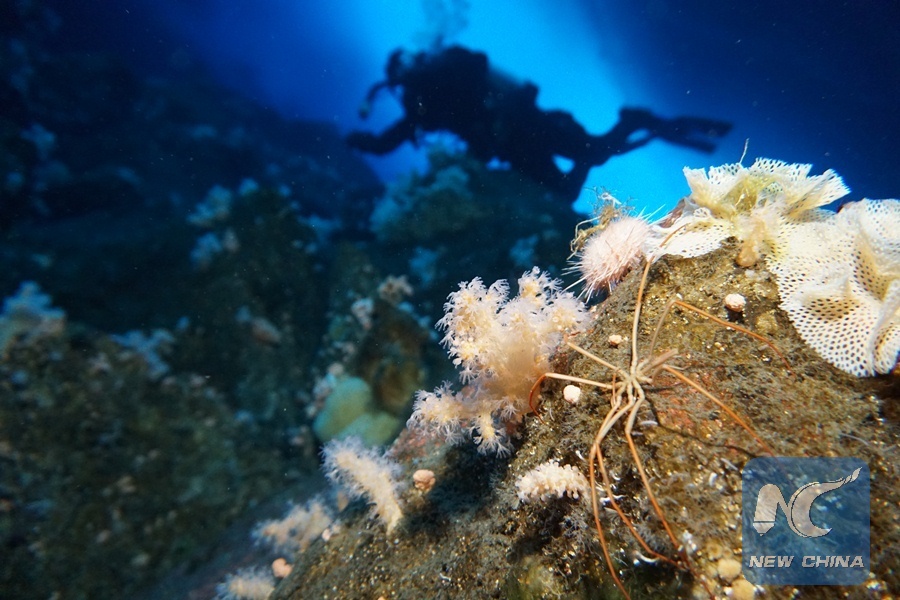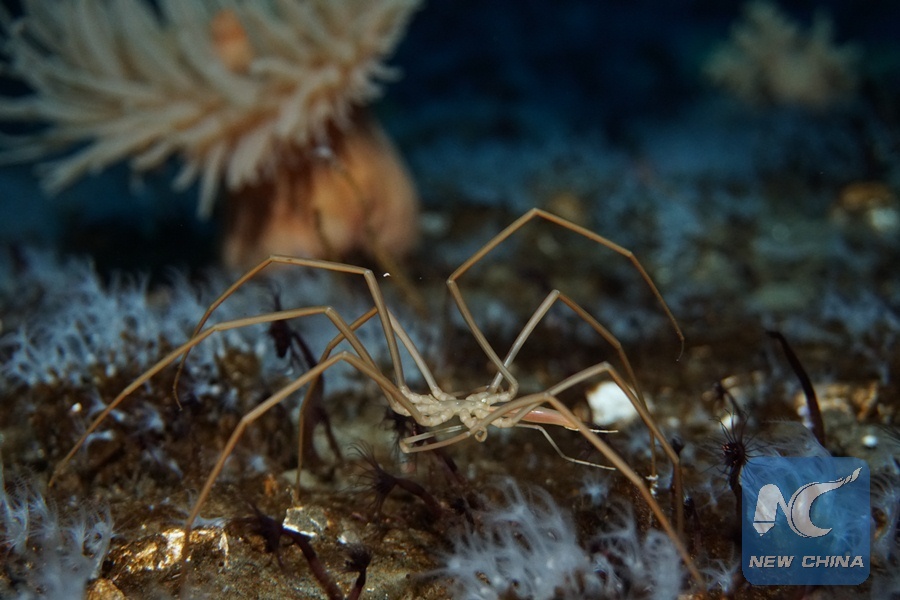
This undated photo shows a sea spider. Xinhua/Credit: Timothy R. Dwyer (PolarTREC 2016)
WASHINGTON, July 10 (Xinhua) -- Most animals depend on a beating heart to pump blood and oxygen, but sea spiders do this mostly with their unusual guts, according to a new study published Monday.
"Unlike us, with our centrally located guts that are all confined to a single body cavity, the guts of sea spiders branch multiple times and sections of gut tube go down to the end of every leg," lead author H. Arthur Woods of the University of Montana, Missoula, said in a statement.
"In effect, sea spiders guts are 'space-filling' and ubiquitous in their bodies in the same way that our circulatory systems are space-filling and ubiquitous."
The study, published in the U.S. journal Current Biology, found that sea spiders, which take in oxygen directly through their cuticles, use gut peristalsis to move fluids.
In fact, the human gut also uses peristalsis -- waves of involuntary constriction and relaxation of muscles -- to mix gut contents and move them along.

This undated photo shows a sea spider. Xinhua/Credit: Timothy R. Dwyer (PolarTREC 2016)
Woods and colleagues made that discovery after an Antarctic mission to explore a phenomenon known as "polar gigantism."
Scientists had long observed that polar species, including giant sea spiders, have larger bodies than their more temperate or tropical relatives.
That trend raises a lot of intriguing questions about how the polar species manage basic life processes, including how to get enough oxygen into their bodies.
One of the things that make sea spiders a great organism for study is "that they are really skinny and, using a microscope, you can see easily into their bodies," Woods said.
His observations at McMurdo Station, a U.S. Antarctic research center, showed that the sea spiders' hearts were beating only weakly and didn't move blood beyond the species' central portion.
In contrast, he noticed, their guts showed very strong and organized waves of peristaltic contractions, which are much more vigorous than would be needed for digestion.
"My 'aha!' moment was to consider that maybe all that sloshing of blood and guts was not about digestion but instead about moving respiratory gases around," he said.
A series of experiments and observations in 12 sea spider species involving video microscopy of tracers in the animals' hemolymph and guts together with experimental manipulation of the guts' ability to contract allowed them to test out and confirm that hypothesis.
It's not clear whether the sea spiders' space-filling guts first arose for purely digestive functions and the respiratory benefits came later or vice versa, the study said.
"Respiratory gut peristalsis may be more widespread than previously recognized," the researchers wrote in their paper.
"Although (sea spiders) are unusual in having gut diverticula in almost all body spaces, partially space-filling guts are common in other arthropods, suggesting that guts could transport gases in these other groups."
Overall, "the findings highlight the vast evolutionary diversity of solutions to problems that all animals encounter," the study said.

